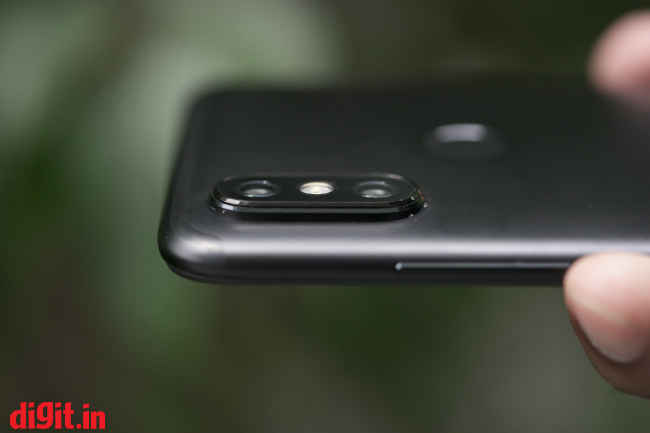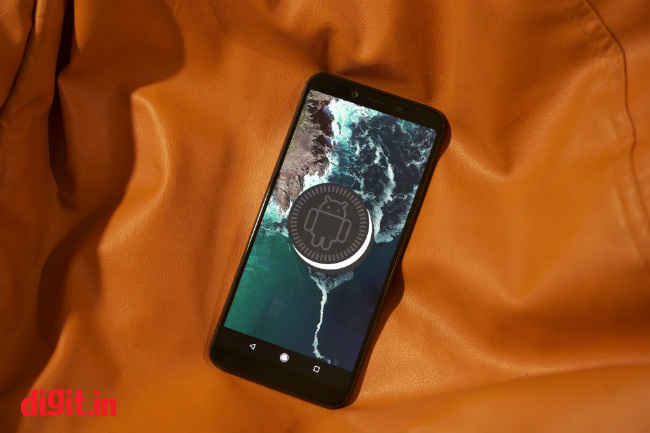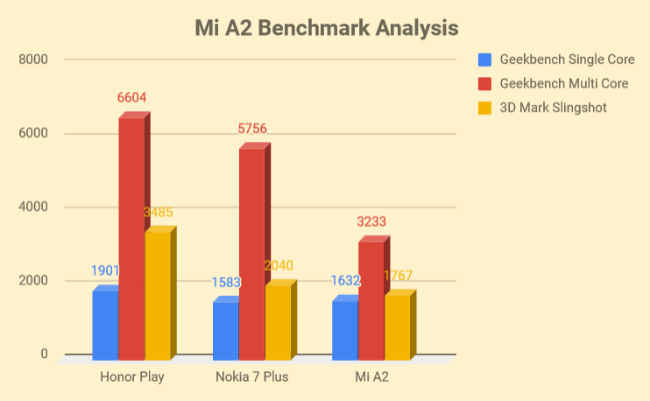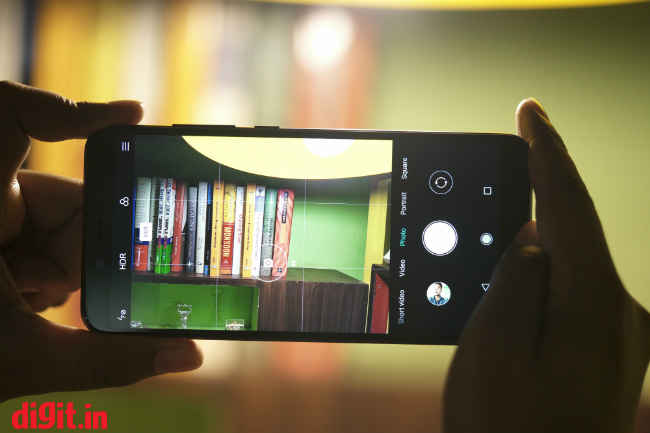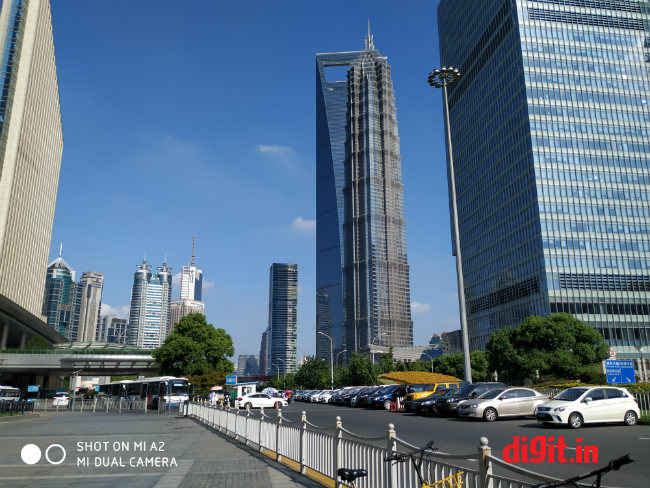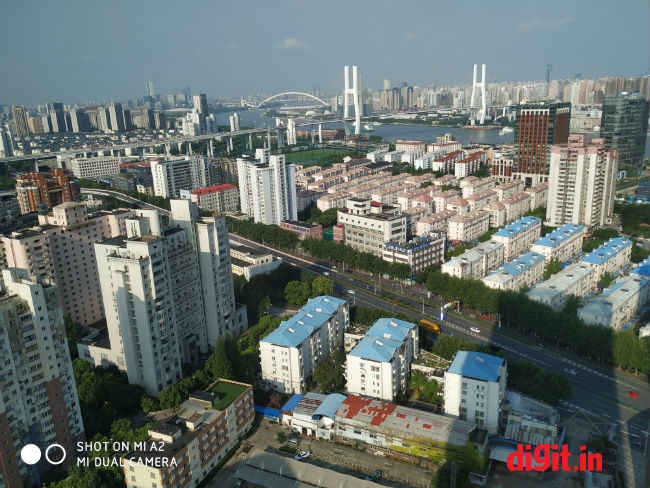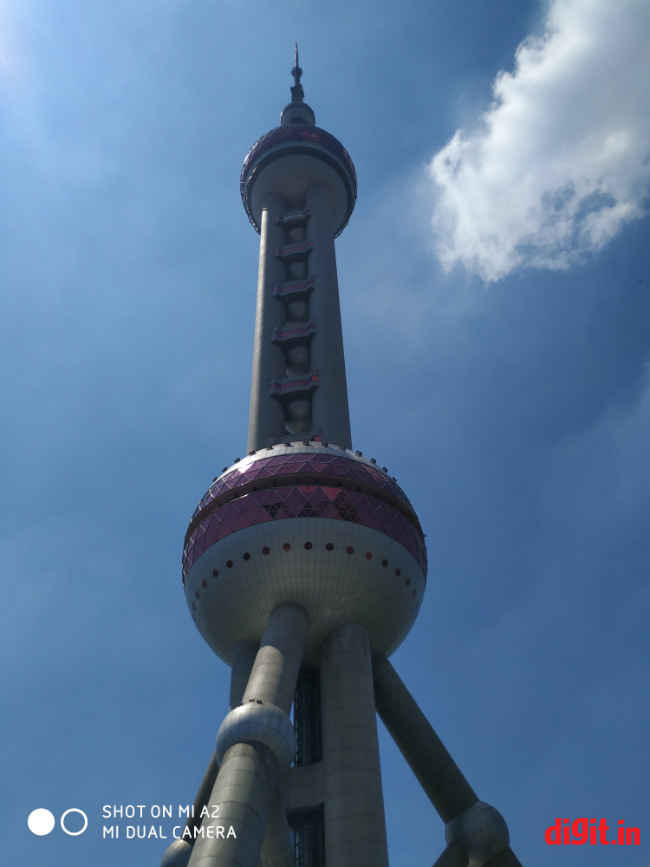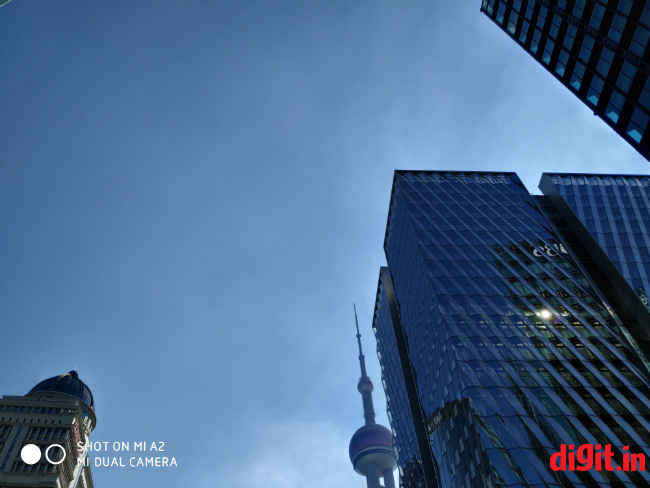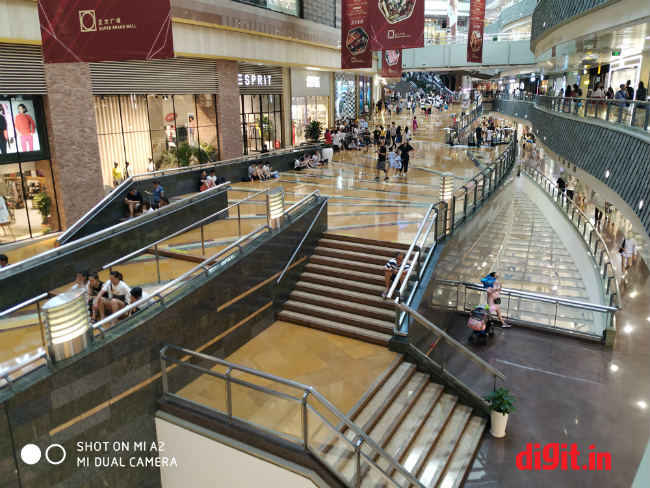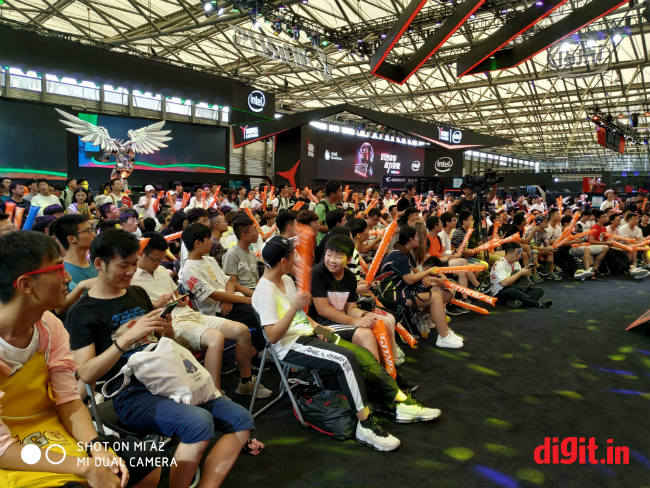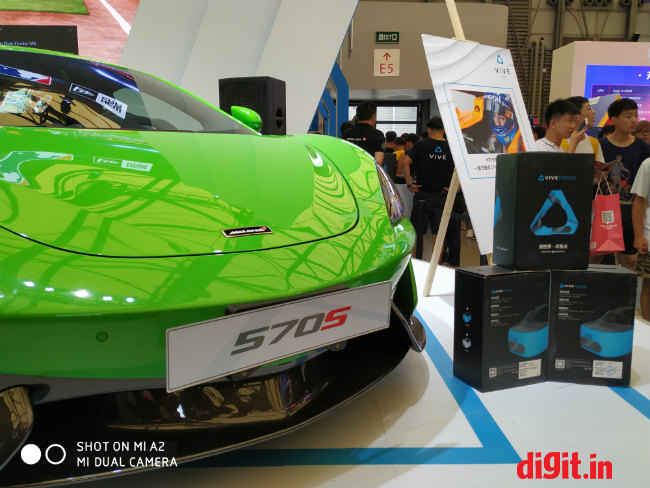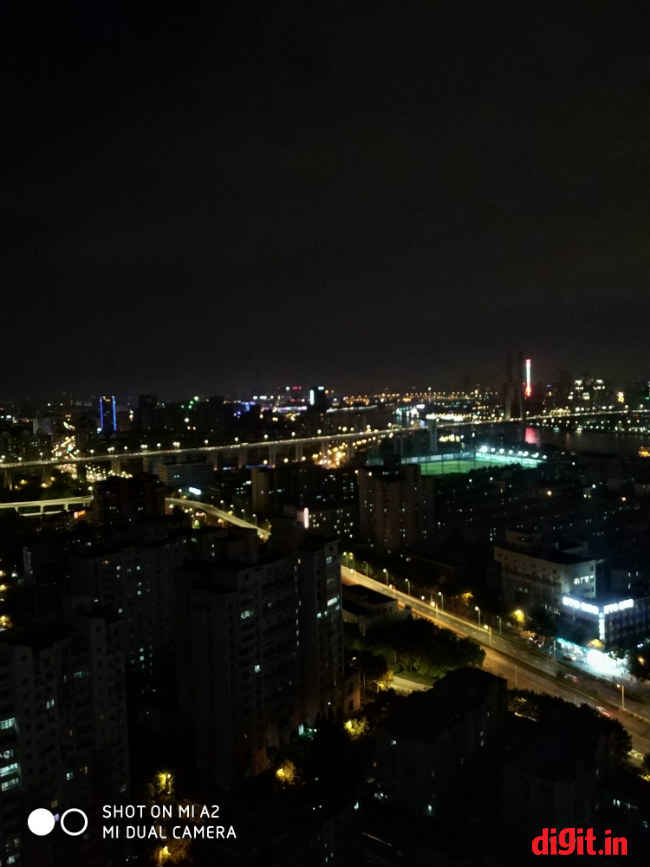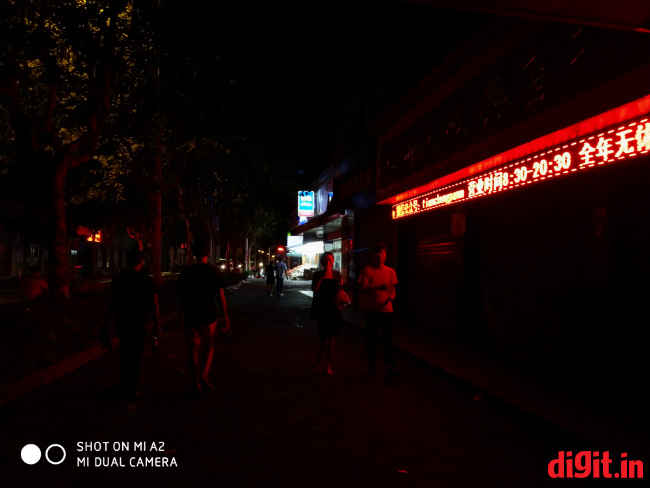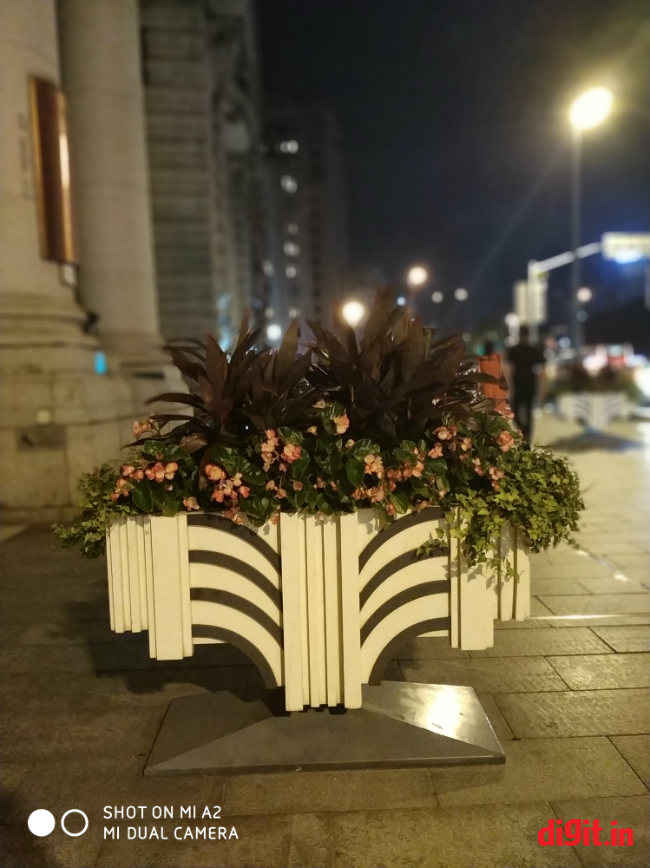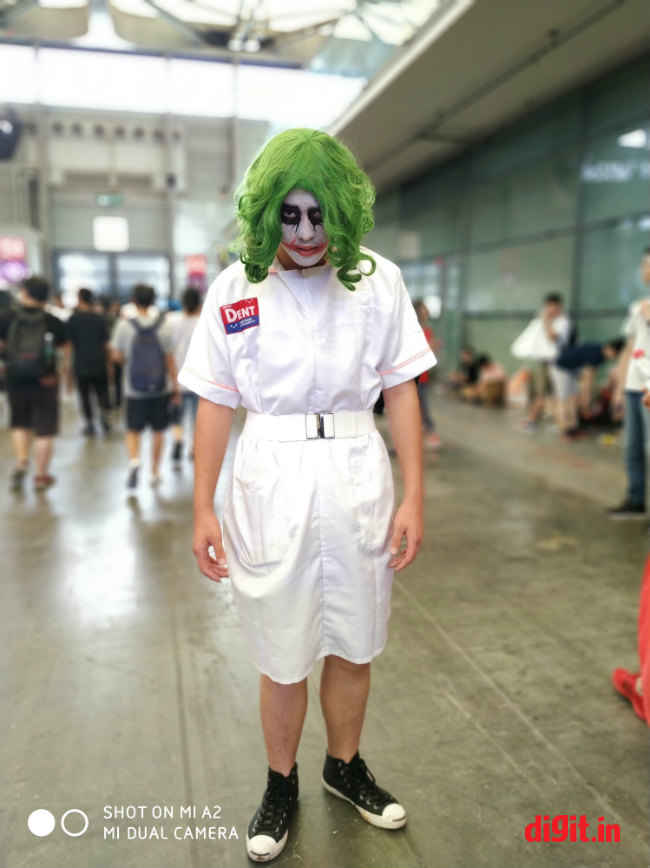Xiaomi Mi A2 Review : Worth the upgrade
The Xiaomi Mi A2 is a jack of all trades and master of some. It has a stellar camera and reliable performance, packaged in a robust, functional design. Despite a few compromises here and there, the A2 stands up to its name of offering a smooth, consistent experience and improves largely on its imaging prowess, especially in low-light.
Design and build
It’s easy to spot the Xiaomi DNA in the Mi A2’s design. It takes the robust utilitarian design of the Redmi Note 5 Pro and builds on top of it. Lift it up and you will feel the smooth metal finish of the back. Yes, the Mi A2 bucks the trend of the glass-sandwich design to stick to a metal unibody design. The anodised finish is smooth but slippery, and is almost completely resistant to smudges. The Mi A2 is incredibly thin at just 7.3mm at its thinnest. That’s achieved thanks to the curved edges that wrap around the display. There’s also Gorilla Glass 5 on top of the panel for added protection. It’s clear that Xiaomi wants this phone to last.
While the body is built tough with no flex whatsoever, the buttons on the right side edge of the phone are a little wobbly. Many users including a colleague have complained about the buttons failing to register input after just a few months of usage. That fear remains with the Mi A2 as well. Another eyesore in the design is the camera bump. The vertically aligned dual camera unit on the top left corner juts out of the thin body by around half a millimeter. It’s impossible to keep the phone stable on a surface as a result. Xiaomi explains this away by saying the bump allows the auto-focus motor more space, which is an acceptable trade-off to me. On the back, there’s the fingerprint sensor centrally placed where the finger can reach easily and the Mi Logo is flushed to the body at the bottom. The front is dominated by the display. Here again, the Mi A2 sticks to the tried and tested 18:9 display instead of going for the notch. The notch is there on the Mi A2 Lite, but that’s not coming to India for now. The bezels have certainly lessened from all sides. Xiaomi has replaced the capacitive navigation buttons with on-screen navigation keys (which disappear when watching content) maximising the real estate.
The slim form factor of the Mi A2 makes it easy to hold the phone and operate. It’s still difficult to use it with just one-hand, but I had no problem typing out quick replies with one hand. I’m nitpicking here but the weight of the phone isn’t evenly distributed as the phone is a little top-heavy. I’ve had situations while using the phone when it was about to tumble out of my hand. The slippery surface doesn’t help with that either. The phone does come with a transparent TPU case that takes care of both the camera bump and the slippery nature.
The Mi A2 isn’t going to make heads turn like the crop of Honor and Huawei phones does. But it absolutely functional and reliable and is bound to last longer than most glass-backed phones.
Display
The new display format allows the Mi A2 to provide more real estate without increasing the size of the phone by much. It has a similar 18:9 IPS LCD display introduced in the Redmi Note 5 Pro and stretches to 5.99-inches diagonally. The panel has a full HD resolution, meaning the pixel density is around 403ppi. If you seen the display on the Redmi Note 5 Pro, you’ll be familiar with the A2’s panel. It’s sufficiently bright and vibrant, although it’s not the most colour accurate one. The colour temperature is slightly on the cooler side and there’s no way to tweak it. Customisation options include turning on adaptive brightness that sets the brightness based on ambient light, scheduling the blue light filter that makes the screen glow with an amber tinge to protect your eyes. The phone also wakes up discreetly when there’s a new notification which doesn’t consume a lot of battery.
Being an 18:9 display means it’s ahead of its time. Most videos are still in the 16:9 format and they appear letterboxed. YouTube videos do scale up to fit the larger screen, but it also crops the content slightly. I caught up on the first season of The Crown on Netflix and it was quite immersive. Games too take up the entire real estate and multi-tasking is much easier on this format. Overall, the 18:9 panel is a certain improvement and if you’re coming from the Mi A1, you’ll definitely find a lot to talk about the Mi A2’s panel.
Performance
One of the few snags of the Mi A1 was the compromise on the firepower. While it was certainly more efficient, the Snapdragon 625 SoC on the Mi A1 was a downgrade in terms of raw performance. That’s taken care of in the Mi A2 as it is powered by the Snapdragon 660. It’s the top-of-the-line mid-range chipset from Qualcomm that packs Kryo 260 cores with a max clock speed of 2.2GHz. That’s paired with an Adreno 512 GPU that promises a 30 percent improvement in graphical performance over its previous generation. It’s the most powerful 6-series chipset from Qualcomm and it makes the Mi A2 run like a horse. Yet, the introduction of the Honor Play in that sub-20k price segment kind of spoils things for Xiaomi’s offering. The Honor Play uses a flagship level chipset and being in the same price range, it makes the Mi A2 look sort of like David in front of Goliath. The benchmark results drives the point further. The Mi A2 scored 128895 on AnTuTu while on Geekbench Single Core and Multi Core tests, it registered 1632 and 3233 points respectively. On GFX Bench’s Car Chase, it managed a paltry 8.5 fps. In comparison, the Honor Play that is powered by the flagship Kirin 970 SoC scored 202639 in AnTuTu while on Geekbench Single Core and Multi Core it scored 1901 and 6604. The stark difference in the two phones become more evident in the GFXBench’s Car Chase test where the Honor Play registered 21 frames per second.
Clearly, the Mi A2 falls far behind the Honor Play, but that’s more for mobile gamers. Gaming isn’t the only aspect of smartphone usage though. In my opinion, the A2 is aimed at everyday users who are more dynamic in their usage. I used the A2 while covering ChinaJoy expo at Shanghai as my primary device and the experience was more than satisfactory. At its peak, my usage centered around frequent use of the camera, back and forth messaging with my team on Messenger, looking up information on Chrome (there were 58 tabs open at one point!!), Google Translate’s live translation in the background, and of course social media browsing while I took a break. Despite all this, the phone never slowed down one bit. I was able to switch between apps easily with minimal downtime in between. Apps also loaded without much of a delay.
The phone did register some instability issues. Apps like Instagram and even Google search quit often during my usage in China. That could either be because it was running on pre-launch software or the Great Firewall of China. Nevertheless, in case it’s an issue with firmware optimisations, Xiaomi is bound to address it in a future OTA update.
Speaking of updates, the Mi A2 is going to be future-proof thanks to its Android One certification. The phone will receive monthly security updates (it was already running the July security patch) along with an upgrade to Android Pie (yep, that’s the name) when it becomes available. Its predecessor, the Mi A1’s track record of providing updates hasn’t been all that stellar. The Mi A1 received the Oreo update well after a lot of OEMs pushed out updates for their respective phones, although security updates were pushed out on time regularly. The Android One certification also means the phone runs on pure stock Android Oreo 8.1. That’s one of the major reasons behind the phone’s smooth operability, like it was on the Mi A1. Android One is Google’s program to showcase Android at its purest and to a lot of extent, the Mi A2 feels like the Pixel. It has the same launcher, the same set of apps and the same update policy. It’s also just as responsive as the Pixel and it’s heartening to see such a smooth experience in a mid-range phone. There’s almost no bloat with the only Xiaomi apps being the Mi Feedback and Mi Store app (which can be uninstalled). Optionally, you can download the Mi Remote app, as this comes with the IR sensor on top giving you control over your appliances. The camera app is also Xiaomi’s own which I’ll talk about in the next section.
Gaming on the Mi A2 is also an acceptable experience. PubG mobile ran on medium graphics with no framedrops whatsoever. While the Mi A2 doesn’t run the popular battle royale game at Ultra HDR Realistic graphics, it gives a stable enough performance in medium graphics. Other, less intensive games like Asphalt Nitro and Dead Trigger 2 also didn’t register any frame drops. But the point remains that if you are serious about mobile gaming, this isn’t the best option out there. The thermals of the phone are a little on the higher side as well. A single match of PubG was enough to heat up the phone to a warm 42 degrees. The heating mostly happens around the camera unit. Continuous video recording too made the phone warm, despite having a 14nm chipset which promises superior power efficiency. The heating was one of the few things off the mark in the phone, where ideally the temperature stays between 38 to 40 degrees which is the case with the Honor Play.
Overall, the Mi A2 is an all-round performer. It doesn’t focus on one single aspect and instead, tries to offer an overall smooth experience no matter whether you are gaming, streaming TV shows or browsing social media. The Mi A1 set the benchmark for mid-rangers higher and the Mi A2 takes it even further. Having the same hardware and the same interface but with a lower price, the Mi A2 essentially eats into the goodwill earned by the Nokia 7 Plus which will have a difficult time convincing buyers to pay the extra premium for its sturdy and unique design.
Camera
The A series by Xiaomi seems to be a good platform for the company to experiment with flagship camera setups in the mid-range price segment. The A1 last year had a secondary telephoto lens with the option of 2X optical zoom. The A2, this time, brings pixel binning which is an imaging technology seen in expensive flagships like the Huawei P20 Pro. For this, the Mi A2 relies on a dual camera setup with a 12MP primary and a 20MP secondary lens. Both lenses have an aperture of f/1.85. The primary lens uses a Sony IMX 486 RS sensor with 1.25um pixel pitch that’s has been used in the Redmi Y2 and the Redmi Note 5 Pro. The secondary camera has a Sony IMX 376 that supports pixel binning by combining four 0.5um pixels into one 2um superpixel. The secondary sensor kicks in by default when there’s less light, but you can manually switch to it in the pro-mode.
The camera app of the Mi A2 will be familiar to anyone who has used a Xiaomi device before. The shooting modes are lined up near the bottom of the screen, easily accessible with one hand. All you need to do is swipe left or right. Options like turning on HDR (which is on ‘auto mode’ by default), along with more granular settings like turning on self-timer, tilt-shift and group selfie mode sits on top of the screen. The focus pointer also doubles up as the shutter button which helps in taking photos quickly. The app is clean, minimalist and doesn’t come in the way of shooting. It takes some exploration to understand all its capabilities which, in my mind, is always a good thing as you keep discovering new features over the time of its usage.
The camera itself is quite fast and snappy when there’s ample light. Under low light, the camera takes a little longer to prepare for the next shot which is understandable considering the pixel binning technology which takes time. The same technology is also there in the front camera which has also has the same 20MP sensor that’s there on the back, again with pixel binning trickery.
I used the camera of the Mi A2 extensively during my trip to China. The attached image samples are a testament to just how good the camera was, no matter what situation I used it in.
Daylight
In both the images, the colour representation is near about accurate and there’s a lot of sharpness in the details. The focus in both the photos was set to infinity bringing the entire frame under focus preserving every minute detail of the scene. A 1:1 crop of the photos show there’s little loss in detail while zooming in. The windows of the distant houses retained the details. It’s dangerously close to what you get from flagship phone cameras. There’s also no AI processing happening. The camera of the Mi A2 doesn’t use much of software algorithms to enhance the photos, something that Huawei and Honor likes to do a lot. That means the photos doesn’t look unnatural. Instead, you get what you see. At least, a very close representation of it.
HDR
Both shots have been taken against the sun, and in both the cases, the details in the shadow regions are perfectly preserved. Most other phones will output a silhouette, but the Mi A2’s HDR is quite commendable in offering a high dynamic range, once again proving its reliability in tricky situations.
Indoors
The camera’s strength becomes even more obvious when shooting indoors. Under more controlled lighting, the camera doesn’t disappoint. In both the photos above, you can see how well the camera has preserved the details. Every intricate details of the sprawling mall is captured (check out the full res photo in the Flickr Gallery linked below), while in the second photo, every individual face in the crowd can be distinctly made out, all under sharp focus.
Glossy surfaces, which are more difficult to focus for phones, also seem like a piece of cake for the A2. The chrome green of the McLaren 570S looks vibrant and easily catches the viewer’s attention.
Food
Close up shots of yummy food are deliciously good. Both the colours and details are near about accurate and the resulting shots are quite sharp. Perfect to make your viewers salivate! Once again, it’s commendable to see the Mi A2 doing everything without relying on heavy software trickery. It’s more consistent as a result, unlike its rivals.
Low light
Now, most cameras excel at taking daytime and indoor photos. A true test of smartphone cameras is how well its low-light performance is. Xiaomi opted for a tried and tested method to improve low light photos which was one of the major complaints in the Mi A1. The result, as you can see in the samples below is a remarkable upgrade from its predecessor.
Late night strolls around the city of Shanghai gave me ample opportunities to put the low-light imaging of the Mi A2 to test. And safe to say, I was left quite impressed. This is when the secondary camera kicks in to capture imaging data in 2um super pixels reducing the signal to noise ratio. The samples above have been taken in ISO ranging from 500 to all the way up to 2000, and still the noise levels are at a bare minimum. In some cases, that has resulted in a lesser dynamic range as most of the area in both the frames are quite dark. Although, the part that’s illuminated come out quite well detailed. The third image is taken with the portrait mode and here too, the flowers are in perfect focus with a clean, blurry background. The second last photo also has fewer shadowy regions and most of the building is under sharp focus. Finally, the last sample which was taken at around 2 in the morning sums up the low-light camera performance of the Mi A2 perfectly. All the colours in the frame are captured well enough and the dark sky above is the least noisy I’ve seen over the years of testing mid-range phones. The colours itself are a little washed out, but that’s an acceptable trade-off to me, as long as the details under low light are preserved.
The only tradeoff here is a lack of bigger sensor and more importantly, a lack of stabilisation. Neither EIS nor OIS is present in the camera, which in means in certain situations, photos come out quite blurry unless taken with the phone mounted on a tripod. Example given below:
Portrait Mode
The Mi A2 can take some stellar portrait shots, keeping the subject of the frame in focus and blurring out the rest of the background. It does so with the help of the secondary camera and by relying the Snapdragon 660’s AI Engine for semantic image segmentation, which is a term used to explain the technology behind separating the subject from the background. The blurring looks very natural with light sources turning into bokehs. The edges of the subjects are uniformly highlighted and details enhanced. This is hands down one of the best execution of the portrait mode I’ve seen on a mid-range phone and can give a lot of expensive phones a run for their money.
Check out all the image samples posted above in high resolution here.
Overall, the camera on the Mi A2 is one of the biggest reasons to buy the phone. A lot many phones now offer a stock Android experience with commendable hardware, but few come close to the all-round consistency of the A2’s camera.
Battery
Owing to its slim form-factor, the battery capacity automatically becomes a trade-off. The Xiaomi Mi A2 packs a 3010mAh battery which is a hair lesser than what the Mi A1 had. Yet, thanks to a similarly efficient processor and lightweight stock Android, the A2 easily manages to last a work day which typically begins around 10AM till 8PM in the night. After heavy usage during my coverage of ChinaJoy, I had to put it on charge around 6:30PM, which is when the battery hit the 10 percent mark. On PCMark’s Work 2.0 Battery Test, the Mi A2 lasted 5 hours 13 minutes, which is a reassuring score. The Honor Play, in comparison has around 800mAh more battery capacity and ekes out around 9 hours of screen time on PCMark. The major quip with the phone comes with a slow charger out of the box even though it supports Qualcomm’s Quick Charge 4.0 standard. Using a Quick Charge certified charger easily tops up the battery in around an hour, which otherwise takes a good 30 minutes more.
Bottomline
The Mi A2 has all the elements of success. A robust, functional design, a reliable display, lightweight UI augmented by a fast-performing chipset and a class-leading camera (especially in the low-light segment) makes the Xiaomi Mi A2 hard to pass over. It’s definitely pricier than its predecessor but for good reason. The improvements in the camera and performance is reason enough to upgrade if you are using the Xiaomi Mi A1. There are some niggles and compromises in the form of an ugly camera bump, thermal instability and app crashes, which might indicates there’s more work needed in optimising the stock Android interface with the hardware. The Mi A2 is also going to be the first Xiaomi device in years to priced around the 20k mark. The Mi 5 was the last to command that price. There was of course the Mi Mix 2, but that’s in a different price segment altogether. It would be interesting to see whether the Mi A2 manages to sell as fast as Xiaomi’s Redmi phones especially when the asking price this time is much higher. As for me, I would recommend the Mi A2 over Honor Play for its all-round smooth experience. The Honor Play is the superior performer here and it looks more premium as well, but the stock Android experience is much more usable and customisable than Honor’s EMUI. Furthermore, the camera on the Mi A2 will be a definite hit with anyone even remotely into photography. The Mi A2 is also a more reasonable buy over the Nokia 7 Plus which has been ruling the upper mid-range segment in our review sheets for a while now, simply for the lesser price tag it comes with.

